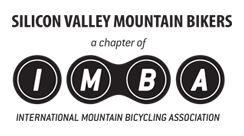The Coe Trail Advisory Council had a modest turnout for the 2nd Saturday Coe Trailwork day on Nov. 12. In all there were 9 of us including Backcountry Ranger Cameron Bowers. We had three first timers joining in, and that was great. The weather was beautiful.
We met at 9 am in Hunting Hollow. Tom rode off on bike to meet us at the site later. Cameron would meet us on the trail later, riding an ATV and carrying the chainsaw. Two welcome newcomers, cued from an MTBR post, took the opportunity to ride in the vehicles and load their bikes aboard. The rest of us stayed in hiking mode for the drive in.
Our objective was roughly the section of Grizzly Gulch Trail between Rock Tower and Tule Pond Trails, but more exactly between two deadfalls near those trails. They were so big that hand saws would be impotent. Hence the need for a ranger to operate a chainsaw (CA State Parks does not allow volunteers to operate any power equipment). These deadfalls have been blocking the trail for the past year. Apart from clearing cut logs, all of the volunteer efforts were directed at creating drainage on and repairing two particular sections of the trail.
We drove in down the Dexter Trail. I put it in 4wd lo-range. We managed the steep descent and climb out with no problems. We parked our three trucks at the T with Grizzly Gulch.
Immediately west of Dexter, the Grizzly Gulch Trail descends steeply to a rocky stream crossing. This section had suffered greatly from water erosion. We created drainage by busting through the berm and hard digging. We filled in the worst of the deep gutters. Given the dry conditions, the earth resisted our efforts mightily, but we overcame. The drainage we created might be adequate for the season, but it seems evident that a large inslope ditch (this being carved by hydraulics and not design) that collects water from sideslopes may be overwhelmed in severe sustained showers.
So we’ll keep an eye on this section. Observing what the water actually ends up doing will help prescribe the solution. Our available labor and the hard dirt were not up to it. The water from that ditch must cross the trail. When it doesn’t flow on the surface it seeps, and makes the slope muddy. A loose rock cross drain might work. A culvert might be a better, but more intensive, solution.
The other section we focused upon was to the east of Dexter about a 1/4 mile or so up the canyon. This is a 100 yard length of trail that crosses a seasonal drainage at the top. Episodic floods, erosion, and poor trail location have combined to enable huge flows of water out of the gulch and down the trail. This has resulted in a deeply incised gutter. The gulch crossing itself at the head of the gutter had narrowed from a road bed to an 8 inch ledge[Grizzly Gulch Trail is an old ranch road deteriorating into narrow singletrack]. Without intervention the stream would be permanently diverted down the trail.
We filled in most of the gutter with loose rocks scattered adjacently on the old road bed that had fallen out of the road cut over time. Lower down the trail is wide, and there is plenty of room to avoid the gutter as you ride or hike upwards. Toward the top it narrowed. We arranged the rocks so that you could actually ride over most them, but were placed so that they will slow water enough to dump silt in between them and eventually fill and cement the gutter in. We’ll see if that happens.
The gulch crossing needed a grade reversal where water was spilling down the trail. Bedrock is at the surface. In effect this would be a dam, a hump; a barrier against flooding water. It was dry. The only material in abundance was rock. A large boulder from inside the barren gulch served as a key stone, and smaller rocks were successively piled onto the side to make a formidable barrier against water flow and to make a beveled transition edge that wouldn’t throw a rider over the bars. But we didn’t want riders to ride over it, so we brushed back low overhanging oak branches and gave trail users more room to cross the gulch to the inside. Then we benched and groomed the tread to create a 4 foot bench. The rock cored hump was buried by the dirt resulting from the grooming.
We will reassess add repairs to these remote sections of Grizzly Gulch after some real rain. Wet conditions would not allow us to drive in and and gain convenient access the site. But wet conditions will make working the dirt simpler. I guess that means an arduous BOB trailer trip in the future.
Cameron’s chainsaw ran out of gas before we could finish clearing the deadfall to the west. One significant cut remained to be made. He promised to return on Sunday and finish the job. Hopefully that has been safely completed and now horse travelers will not need to detour on the steep volunteer detour trail, hikers may pass through unimpeded, and cyclists can ride on without dismounting.
In all it was an excellent day outdoor exercise working as cheerful volunteers. The canyon is absolutely stunning in the area. Large lichen encrusted crags and soaring hawks watched over our shoulders all day. We safely succeeded in completing our objective in an enjoyable way.
I am looking forward to the next 2nd Saturday Coe Trailwork!
-Paul



